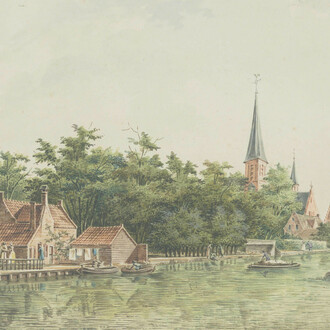The German magazine of international photo art, Fotographie: Zeitschift internationaler Fotokunst, and its publisher Wolfgang Schulz are the focus of the exhibition Fotographie: Wolfgang Schulz and the Photography Scene around 1980. Works by Wolfgang Schulz and other photographers that will be shown in the Kaisersaal of the Museum für Fotografie (Museum for Photography) illuminate an important period of drastic change in the history of West German photography.
In the years around 1980 photography gained a new status in the art world. New approaches to photography were explored; museums began to show interest in the medium; the first photo galleries opened; photography made its first major appearance at documenta in 1977; and photo magazines were launched. The starting point for the current exhibition on this exciting, transformative period is the photo magazine Fotographie: Zeitschrift internationaler Fotokunst (subsequently Fotografie: Kultur jetzt), produced in forty issues between 1977 and 1985 under the editorship of Wolfgang Schulz. The periodical quickly developed into a much-noticed, often controversial, national scene magazine: an extremely lively forum for a burgeoning new movement that was still largely unaffected by art commerce.
Wolfgang Schulz sought to elude established norms, pursuing very diverse styles and subject matter both in his role as editor and as a photographer who created an exceptional body of work. The journal now seems to have been almost completely forgotten. Yet the achievements of the editor and the contributing authors and photographers deserve a closer look. The mix of images and text they created is an important source for exploring a photo scene around 1980 that worked hard to establish photography as an art form in its own right.
The project is a first attempt to rediscover an important aspect of the history of photography in West Germany. The exhibition is divided into four sections. It pays tribute to Wolfgang Schulz’s photographic work around 1980, shows images by various photographers whose work influenced the late 1970s and early to mid 1980s, presents all forty issues of the magazine Fotographie in a serial layout forming an impressive visual panorama, and offers an oral history forum using video interviews of contemporary eyewitnesses.
The German magazine of international photo art, Fotographie: Zeitschift internationaler Fotokunst, and its publisher Wolfgang Schulz are the focus of the exhibition Fotographie: Wolfgang Schulz and the Photography Scene around 1980. Works by Wolfgang Schulz and other photographers that will be shown in the Kaisersaal of the Museum für Fotografie (Museum for Photography) illuminate an important period of drastic change in the history of West German photography.
In the years around 1980 photography gained a new status in the art world. New approaches to photography were explored; museums began to show interest in the medium; the first photo galleries opened; photography made its first major appearance at documenta in 1977; and photo magazines were launched. The starting point for the current exhibition on this exciting, transformative period is the photo magazine Fotographie: Zeitschrift internationaler Fotokunst (subsequently Fotografie: Kultur jetzt), produced in forty issues between 1977 and 1985 under the editorship of Wolfgang Schulz. The periodical quickly developed into a much-noticed, often controversial, national scene magazine: an extremely lively forum for a burgeoning new movement that was still largely unaffected by art commerce.
Wolfgang Schulz sought to elude established norms, pursuing very diverse styles and subject matter both in his role as editor and as a photographer who created an exceptional body of work. The journal now seems to have been almost completely forgotten. Yet the achievements of the editor and the contributing authors and photographers deserve a closer look. The mix of images and text they created is an important source for exploring a photo scene around 1980 that worked hard to establish photography as an art form in its own right.
The project is a first attempt to rediscover an important aspect of the history of photography in West Germany. The exhibition is divided into four sections. It pays tribute to Wolfgang Schulz’s photographic work around 1980, shows images by various photographers whose work influenced the late 1970s and early to mid 1980s, presents all forty issues of the magazine Fotographie in a serial layout forming an impressive visual panorama, and offers an oral history forum using video interviews of contemporary eyewitnesses.
Photographers: Wolfgang Schulz, Hans Christian Adam, Gosbert Adler, Dieter Appelt, Heiner Blum, Joachim Brohm, Dörte Eißfeldt, Verena von Gagern, André Gelpke, Dagmar Hartig, Andreas Horlitz, Hans-Martin Küsters, Reinhard Matz, Angela Neuke, Heinrich Riebesehl, Wilhelm Schürmann, Holger Stumpf, Ulrich Tillmann/Wolfgang Vollmer, Petra Wittmar and Miron Zownir.
The exhibition is curated by Reinhard Matz, Steffen Siegel and Bernd Stiegler in cooperation with Esther Ruelfs from the Museum für Kunst and Gewerbe in Hamburg. It has been enlarged for the Berlin venue in collaboration with Ludger Derenthal from the Kunstbibliothek. Wolfgang Schulz, Hans Christian Adam, Gosbert Adler, Dieter Appelt, Heiner Blum, Joachim Brohm, Dörte Eißfeldt, Verena von Gagern, André Gelpke, Dagmar Hartig, Andreas Horlitz, Hans-Martin Küsters, Reinhard Matz, Angela Neuke, Heinrich Riebesehl, Wilhelm Schürmann, Holger Stumpf, Ulrich Tillmann/Wolfgang Vollmer, Petra Wittmar and Miron Zownir.
The exhibition is curated by Reinhard Matz, Steffen Siegel and Bernd Stiegler in cooperation with Esther Ruelfs from the Museum für Kunst and Gewerbe in Hamburg. It has been enlarged for the Berlin venue in collaboration with Ludger Derenthal from the Kunstbibliothek.
















